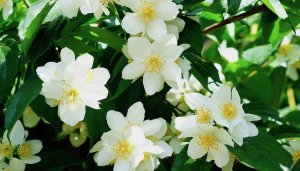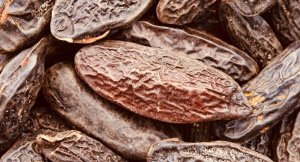Perfume has a long, colorful and very fragrant history whose origins date back to the ancient cultures of Mesopotamia and Egypt. The art was further refined by the Roman and Arab civilizations.
Derived form the Latin verb, perfumare meaning: “to smoke through,” the world’s oldest surviving perfume factory was discovered in Cyprus, Greece, in 2003. Experts have carbon-dated it back to more than 4,000 years ago. Archaeologists uncovered within the 3,230 square-foot space at least 60 stills, mixing bowls, funnels and perfume bottles.
Perfumery was also practiced in the Indus civilizations of India (3300 BC-1300 BC). In the 9th century, an Arab chemist named Al-Kindi published the Book of the Chemistry of Perfume and Distillations, a volume containing more than 100 recipes for making aromatic waters, fragrant oils and salves.
By the early 13th century, the art of perfumery had spread to Western Europe and prospered during the 16th century in Renaissance Italy and France. Rene, The Florentine, who served as Catherine De Medici’s personal perfumer, transported perfume to France via a secret passageway between his laboratory and the queen’s living quarters to insure that no formula would be stolen along the way.
France quickly became one of the major European hubs for the manufacture of perfume and cosmetics, but their sale was reserved for the wealthier classes and nobility.
Modern Perfume Creation And Mass Marketing
The mass marketing of perfume began with the Industrial Revolution of the mid-19th century when synthetic chemicals were introduced to the manufacture of perfume, making them more affordable to the general public. Today, the art of perfume manufacturing has become a multi-billion dollar industry globally, and the scientific process of making perfume has undergone many refinements and improvements down through the decades.
Modern perfume manufacturers favor synthetic chemicals over natural oils, even though natural ingredients are still highly prized for use in the finest and most costly scents. Today’s perfume consumers seem to prefer less concentrated forms of fragrance and the combination of these two factors have brought the price of perfumes down and encouraged more frequent use of scents in the daily life of the average user.

What Are The Aromatic Sources Used In Perfume Manufacture?
When blending scents for our clients, which include a wide swath of industry professionals including but not limited to perfumery brand owners, product developers, cosmetic scientists, skin-care development chemists, soap makers and more, our chief perfumers concentrate on the four basic categories of aromatic sources that are used in modern perfume creation.
They are: plant; animal; natural and synthetic. These divisions can be broken down further as follows:
Plant Sources Used In Perfume Manufacturing
Since ancient times, fragrant plants of all types have been utilized as sources for both essential oils and aromatic mixtures. Even today, they represent the largest resource for fragrant compounds used in perfumery.
The plants produce organic amalgams known as secondary metabolites that protect them from infections and attract pollinators. Parts of each plant can offer more than one source for aromatics as defined below.
Bark
Cinnamon, cascarilla and sassafras root are three commonly used dried barks used in the manufacture of fine scents. Some other common bark aromatics include: sandalwood; rosewood; agar wood; cedar; birch; pine and juniper.
Flowers and Blossoms
Flowers and blossoms are the most common sources of fragrance for perfumes. One of the most valuable elements of a fine perfume is the ubiquitous rose, which is also known as the “queen of all flowers.” Its inclusion in fragrance dates back to the civilizations of ancient Rome and Greece.
Jasmine is considered another pure essence, which renders a finished quality to any perfume. Both the Victoria and the Parma Violet varieties have been used in perfumes and medicines down through the centuries because of their varied aromas.

The aromatic orange flower is traditionally associated with brides all over the world. Orange flower oil, which is known as neroli, was named after the Italian Princess of Neroli, who was known to scent her gloves with this precious scent. Plumeria flowers are used to make Hawaiian leis and they are treasured by Polynesians for their color and fragrance.
Resins
Historically, these ancient compounds were used as foundations for the creation of incense and medical antiseptics. Frankincense, labdanum; myrrh; Balsam of Peru and gum benzoin are used in natural perfumes, while pine and fir resins are preferred in synthetic scents.
Leaves and Twigs
The leaves and twigs of some plants render the ‘green’ aroma present in many perfumes. Some of the more popular ones include: lavender leaf; patchouli; sage; violets; rosemary, and citrus.
Fruits
The fruits in perfumery yield their aromas from their rinds. The most commonly used include: oranges, lemons and limes. Grapefruit rind is utilized as well, but its synthesized form is more often preferred because unlike the natural rind, it contains no sulfur, which when degraded has a very unpleasant smell.
Roots, Rhizomes and Bulbs
The three most often utilized elements in this category include: iris rhizomes (a modified subterranean plant stem that send out roots and shoots from its nodes); vetiver roots, and several rhizomes of the ginger family.
Seeds
The most commonly used seeds in perfumery are: tonka bean, carrot seed, coriander, caraway, cocoa, nutmeg, mace, cardamom, and anise.

Woods
These aromatics form the base notes of most perfumes. Lichens, (fungi and algae growing together) such as oak and tree mosses, transmit aromas of bark, seashore and foliage. Sandalwood, rosewood, agarwood, birch, cedar, juniper, and pine are the most frequently used wood sources of perfume aromatics.
Animal Sources Used In Perfume Manufacturing
Ambergis
This sperm whale secretion is a highly prized compound that was used in perfume production for many years. It has a sweet, earthy scent. Today, it is found only in synthetic form. As such, it is one of the few fragrance resources that is harvested without causing controversy or harm to its source.
Civet Musk
This aromatic source derives from the odorous sacs of African civets. Although once very popular, today its use is in decline due to the upsurge in synthetic musk.
Castoreum
Used in perfume base notes to create a leathery “new car” smell, this aromatic is derived from the sacs of both the North American and European Beaver, two species that exude this scent in order to mark their territory.
Hyraceum
This scent is a combination of musk, castoreum, civet, tobacco and agarwood, and it is derived from the petrified excrement of the African and Middle Eastern Rock Badger.
Musk
Derived from a gland of the Himalayan male musk deer, this aromatic source has been replaced by synthetic musks, which are sometimes referred to as “white musk.”
Synthetic Sources Used In Perfume Manufacturing:
White musks are among the most widely utilized types of synthetic aromatics and they emulate the scent of deer musk. They have a clean, smooth and sweet scent and are found in all forms of commercial aromas. Primarily, they serve as neutral backgrounds to middle notes.
Additional synthetics include: aldehydes (made most famous by use in Chanel #5), ionones (violet notes), salicylates, acetates, ketones, alcohols, various esters and others, opening the array of limitless artistic perfumery creations.
The Fragrance Compounds in Perfumery
Many delicious scents, like vanilla, cinnamon and floral, are developed by blending aromatic compounds. A fragrance compound is defined as any chemical amalgam that has a smell or odor that is sufficiently volatile to be transported to the olfactory system in the upper part of the nose. Also known as odorant and aromatic compounds, particles meeting this specification have molecular weights of less than 300.
These compounds derived their names from the smells they produced. Chemically speaking, they are a large class of molecules that include a flat ring of atoms attached with alternating single and double bonds or more rings within their structure. One defining aspect concerns a process known as resonance, in which the alternating bonds allow the atoms in the ring to share electrons.
Many aromatic compounds are derivatives of benzene, which is widely used in perfumery because of its superior blending qualities. Known as phenlyethanol, this element is a major ingredient in rose oils, and their manufacture requires substituting other groups for the hydrogen atoms.
These amalgams can be found in food, wine, spices, perfumes, fragrance oils and floral scents. Many form during the ripening of fruits nd other crops. In wines, most are byproducts of the fermentation process. Women’s fragrances tend to have higher levels of aromatic compounds than men’s perfumes.
Perfume Longevity And Fragrance Compounds
The percentages of aromatic compounds that may be present in any fragrance composition carries a wide range of potential concentrations and results in terminology that can never, by its very nature, be exact. In addition, variations always occur because different perfumeries, such as the ambient air-care specialists at Alpha Aromatics, assign diverse amounts of oil to each of their fragrances.
The concentration and endurance of a perfume will depend largely upon the intensity and longevity of the aromatic compounds or perfume oils that are used in its formulation. The power of any scent increases or decreases respectively, depending upon the percentage of compounds contained within the scent.
The most widespread terms used to describe a fragrance’s approximate concentration are as follows:
- Perfume extract: 20%-40% aromatic compounds
- Eau de parfum: 10-30% aromatic compounds
- Eau de toilette: 5-20% aromatic compounds
- Eau de cologne: 2-5% aromatic compounds
Alpha Aromatics And Perfume Manufacturing
Our master perfumers know and respect the mysterious and delicate power of fragrance formulation. The end product is always unique, as scent has remained down through history as the only accessory we wear that is always present, and yet completely invisible.
Both a leader and pioneer within the industry, our flawless custom compositions are used for the production of superior quality perfumes, personal care products, candles and diffusers and fragrances for home products, just to name a few.
Our chief perfumer, Roger Howell (pictured below), is an exquisite artist who develops custom fragrances that seamlessly mirror the company’s unblemished reputation for excellence.

In his own words: “We drive the scent trends that guide product branding for a wide range of clients in the personal care, household cleaning, and institutional industries…. We know how important branding is for the continued growth of our clients’ product lines, and we pride ourselves on building scents that build great brands.”
The Future Of Perfumery In Commercial Products
At the World Perfumery Congress in 2018, professionals addressed the topic of what lies ahead in the world of fragrance in terms of consumer trends, intellectual property and advances in technology.
Hannah Symons, beauty and fashion research manager at Euromonitor International, had this to say in her congress presentation entitled: The Future of Fragrance & Growth Opportunities: “We have identified six key pillars that we believe encapsulates the new consumer. They are simplicity, purpose, well-being, experience, empowerment and differentiation.”
Simplicity refers to a future when products are manufactured with less hoopla and marketing and a clear focus on the scent itself and what it has to offer.
In addition, consumers are seeking products that reinforce their lifestyles, support a cause, integrate ethical values and promote cultural and religious inclusion. Well-being has become a significant factor in consumer purchasing and is expected to become more so in the future.
Well-established online brands attract the educated consumer and are consistently influencing the demand for fragrances. In addition, there is also an indication that novelty scents will have their place in the future of perfumery as well.
Empowerment is a subtle aspect in perfumery that refers to fragrance selection. Tomorrow’s consumers are less likely to be influenced by celebrity brands and endorsements.
Digital platforms are destined to become more important in consumer purchasing. Differentiation refers to a focus on adapted services and the story of a brand. One perfume professional summed it all when they said: “Smell brings us together and grounds us in reality.”
In Conclusion
So, if you’re looking to create unique marketable scents for anything from personal care products and candle product lines to mass market cleaning products, submit a written inquiry or speak with our team today and begin harnessing the mystical and lucrative power of perfume composition.
Final thoughts on perfume: Perfume is the indispensable complement to the personality of women, the finishing touch on a dress. ~Christian Dior
This blog was written with the research, insight, direction and approval of our master perfumer, Roger Howell and the Alpha Aromatics perfumery management and staff. Learn more about Mr. Howell, our company’s mission, our strict adherence to regulatory and environmental quality standards as well as the passion that we put behind every blended scent creation we create.
 alpha aromatics®
alpha aromatics®